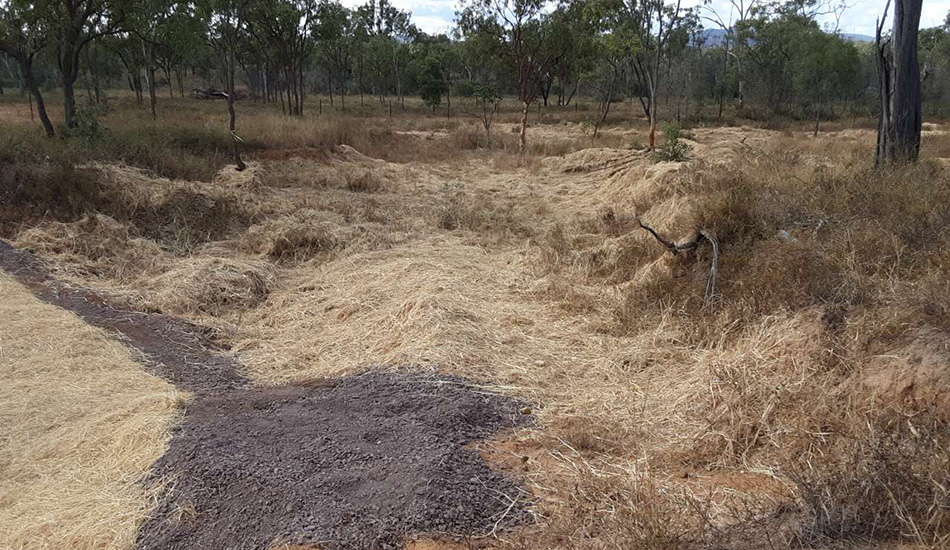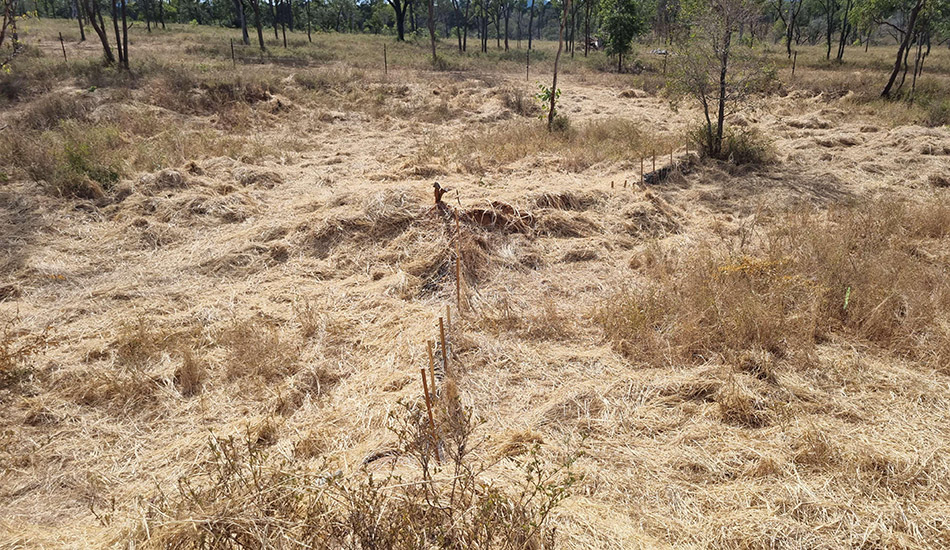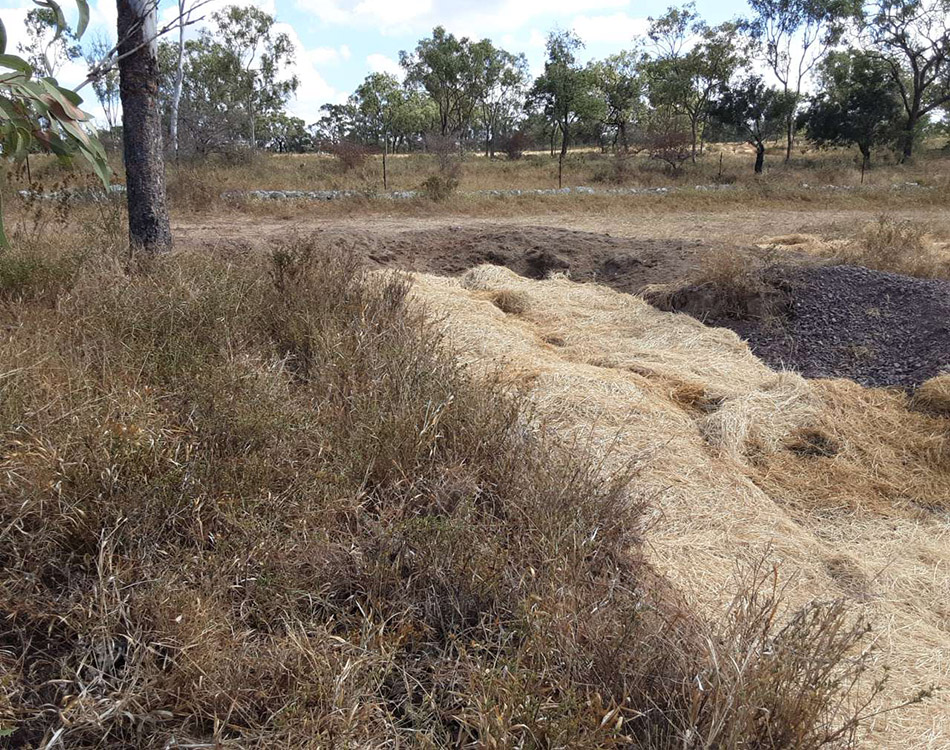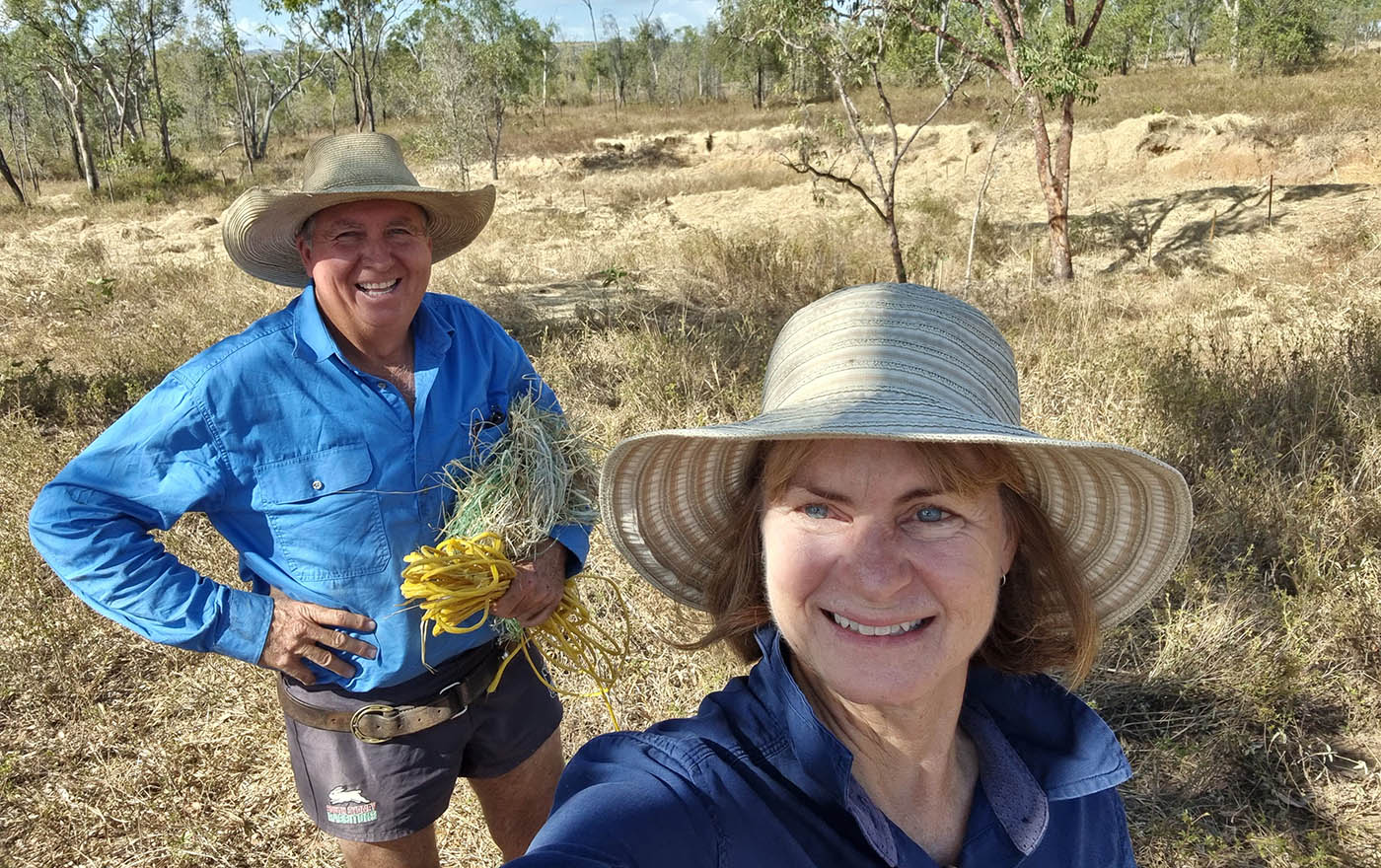Grazier remediates small-scale gullies to reduce soil erosion
Scottville grazier Graham Gordon and NQ Dry Tropics Soil Conservation Officer Bernie Claussen.
Scottville grazier Graham Gordon is undertaking small-scale gully works to slow water on his property to improve soil and pasture health, and reduce sediment loss.
The NQ Dry Tropics’ Landholders Driving Change (LDC) project has helped Graham access technical expertise and resources to halt progress of an active gully that had two head cuts, the secondary one cutting down to the sedimentary bedrock.
Treatment works included a horseshoe-shaped level rock weir with spreading structures above the gully heads to slow and spread water, and to reduce the volume and velocity of water entering the gullies.
The leading gully head was backfilled, forming a gentler slope to enable plants to grow, essential for stabilising the area.
Leaky weirs were installed in both gullies to help stabilise gully floors. Rock gabions suited the deeper gully where bedrock was exposed, while more porous netting and mulch weirs were installed higher upslope where there was soil.
They’re expected to collect debris and sediment, helping fill in the gully, providing further stabilisation and facilitating vegetation growth.
All bare areas were covered with a layer of mulch including the side walls. This protective cover will reduce the erosion that occurs from raindrop impact, that is, cushion the blow from every raindrop falling on the fragile, slaking soil.
An adjacent smaller gully was treated with rock weirs to make good use of spare rock left over from the treatment works.
The project site is located downslope of erosion mitigation work undertaken by Graham 12 months earlier. He said completing mitigation at this site was a logical next step to remediate the catchment.
“We’re taking a whole-of-property approach to fixing gullies. Being a smaller property, 222ha, means we’re able to do that,” Graham said.
“If you can block a gully and hold that water back in the country, you’re going to keep water and soil on the paddock, and that’s a whole lot better than seeing it run into the creek.
“It’ll improve our topsoil depth and soil-water-holding capacity to enable even grazing of our pastures.”
Temporary fencing has been erected around the site to exclude cattle from the project site to allow it to stabilise.
Graham leases other blocks in the district and rotates his 50 cows through the three paddocks. This enables him to rest this 201ha paddock during the wet season, bringing the cattle back to this paddock mid-year.
This rotation enables Graham to ensure good ground cover at the end of each dry season, and to meet the reef regulations standards for grazing in catchments that flow into the Great Barrier Reef lagoon.
NQ Dry Tropics Soils Conservation Officer Bernie Claussen said Graham took advantage of accessing technical advice to help him design and deliver the most appropriate treatments.
“Prior to this project, Graham had remediated numerous gullies using heavier earthworks machinery,” Bernie said.
“However he was open to trying these lighter works which could be completed with his tractor and bucket, and some elbow grease”.
“With such severe erosion, there are no quick fixes or one-size-fits-all solutions. Landholders like Graham who are adaptive, inquisitive and keen observers of the landscape are a pleasure to work with and everyone involved learns from the results together,” she said.
The LDC project is helping landholders in the Bowen, Broken, Bogie (BBB) catchment develop and implement cost-effective designs to remediate small-scale gullies to reduce soil erosion and improve water quality.
Technical experts work alongside graziers to design and deliver treatments, using local contractors where possible, and sharing resources to help reduce costs.

Small leaky weirs were installed to slow water and catch sediment, then was covered with hay to provide opportunity for vegetation to strike. Hover the cursor on the image to see the area before and after the work was done.

Small rock weirs underpinned the repair in this gully. Hover the cursor on the image to see the area before and after the work was done.

Rock gabions help stabilise the smaller structures in this gully, all designed to slow water, catch sediment and encourage revegetation. Hover the cursor on the image to see the area before and after the work was done.

